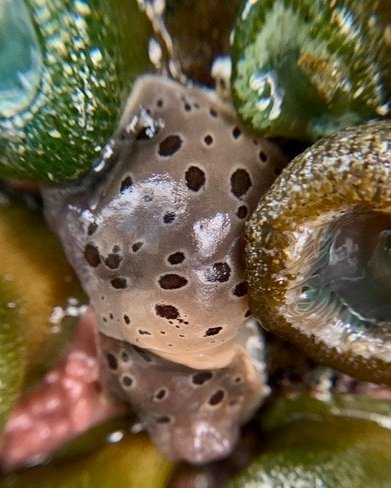HRAP Online Encyclopedia
Nudibranchs
Nudibranchs, more commonly known as sea slugs, are beautiful tide pool invertebrates that come in a wide range of sizes (from 0.5 to 30 cm) and colors. They all have two projections at their head called rhinophores that appear and function similar to antennae which detect chemicals in the water. There are four main subgroups of nudibranchs found at Haystack Rock. Aeolids have cerata (finger-like projections) along their back in clusters, groups, or rows. Dorids have smoother-looking backs and a little fluffy-looking patch of gills near their back end that forms a circle. Dendronotids have gills that look similar to the cerata of aeolid nudibranchs but may be branching and can extend onto the face of the nudibranch instead of just down their back. The final group are the arminids which are the species that don’t quite match the other groups. Haystack Rock typically only sees one species of arminids, the frosted nudibranch, which has cerata that are more flattened and leaf-like. With some patience and a low tide, nudibranchs can be found year round, but they are most plentiful in the spring. Each species of sea slug will stay close to their food source, but in general the best places to look for nudibranchs are in the tide pools near The Needles.














